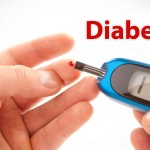![]() According to the US Department of Health and Human Resources 14th report on carcinogens, cancer affects almost everyone’s life, either directly or indirectly. Approximately one out of two men and one out of three women living in the United States will develop cancer at some point in his or her lifetime (NTP, 2016). According to the American Cancer Society (ACS, 2017 a), cancer is the second most common cause of death in the United States and accounts for nearly one of every four deaths. The world health organization (WHO, 2017) estimates that worldwide in 2012, 14 million new cancer cases and 8.2 million cancer related deaths occurred, and that the number of new cancer cases is expected to rise by about 70% over the next 20 years.
According to the US Department of Health and Human Resources 14th report on carcinogens, cancer affects almost everyone’s life, either directly or indirectly. Approximately one out of two men and one out of three women living in the United States will develop cancer at some point in his or her lifetime (NTP, 2016). According to the American Cancer Society (ACS, 2017 a), cancer is the second most common cause of death in the United States and accounts for nearly one of every four deaths. The world health organization (WHO, 2017) estimates that worldwide in 2012, 14 million new cancer cases and 8.2 million cancer related deaths occurred, and that the number of new cancer cases is expected to rise by about 70% over the next 20 years.
|
Approximately one half of men and one third of women living in the |
Cancer is defined as a group of diseases which causes cells in the body to change and grow out of control. This class of diseases is comprised of more than 200 different types of cancer, each classified by the type of cell that it initially affected. The most common cancers in the United States are breast cancer (14%), lung cancer (13%), prostate cancer (11%), colorectal cancer (8%), bladder cancer (5%), melanoma (4%), non-Hodgkin lymphoma (4%), thyroid cancer (4%), kidney cancer (4%), and leukemia (4%). Other cancers collectively comprise around 29%.
Mesothelioma and lung cancer comprise the majority of cancers in manufacturing and construction businesses.
Cancer is ultimately the result of cells that uncontrollably grow and do not die. The more dangerous or malignant tumors form when two things occur:
- a cancerous cell manages to move throughout the body using the blood and lymphatic systems, destroying healthy tissue in a process called invasion and
- manages to grow making new blood vessels to feed itself in a process called angiogenesis.
What causes cells to uncontrollably grow and become cancerous? Cells can experience uncontrolled growth if mutations to DNA exist. Cancer occurs when a cell’s gene mutations prevent the cell from correcting DNA damage.
Some causes of cancer include:
- being born with certain genetic mutations
- an increase in the number of possible cancer-causing mutations in our DNA that occurs with age: age is an important risk factor for cancer.
- Eight viruses known as oncoviruses (such as Epstein-Barr virus, hepatitis B and C, HIV, Kaposi’s sarcoma-associated herpesvirus).
- Carcinogens, a class of substances that are directly responsible for damaging DNA, promoting or aiding cancer. When a body is exposed to carcinogens, free radicals are formed that try to steal electrons from other molecules in the body. These free radicals damage cells and affect their ability to function normally.
- Ionizing radiation (e.g., gamma rays and x-rays)
- ultraviolet radiation
- tobacco
- alcoholic beverage consumption increases cancer risk in multiple ways:
- metabolizing ethanol and alcoholic drinks to acetyl guide acetaldehyde, which is a toxic chemical in a probable human carcinogen; acetaldehyde can damage both DNA and proteins;
- generating reactive oxygen species which can damage DNA. Reactive oxygen species are chemically reactive molecules that contain oxygen. They can also damage proteins and lipids through oxidation;
- impairing the body’s ability to break down and absorb various nutrients that may be associated with cancer risk, including vitamin A, nutrients in the vitamin B complex, vitamin C, D, E, and carotenoids;
- increasing blood levels of estrogen, a hormone linked to the risk of breast cancer;
- alcoholic beverages may also contain various carcinogenic contaminants that are introduced during fermentation and production such as nitrosamines, asbestos fibers, phenols, and hydrocarbons (NCI, 2013)
- Shiftwork: in 2007, international agency for research on Cancer (IARC), concluded that shiftwork is probably carcinogenic to humans. (Straif, Baan, Grosse, et. al. 2007). The evidence is strong is for breast cancer, although the risk of prostate and colorectal cancer may also be increased by shiftwork. Possible mechanisms by which shiftwork increases the risk of cancer include:
- light at night suppresses the production of melatonin which has direct and indirect anticancer effects
- sleep disruption stimulates the hypothalamic pituitary axis to release glucocorticoids, which results in depression of the immune system.
- Phase shift, in which functions such as digestion are out of phase with central sleep and wake rhythms. This may result in changes in control cell and tissue proliferation.
- Decreased production of vitamin D.
- A person’s risk of developing a particular cancer is influenced by a combination of factors that interact in ways that are not fully understood. Some of the factors include:
- personal characteristics such as age sex and race;
- family history of cancer;
- an individual susceptibility to a substance;
- diet and personal habits such as cigarette smoking and alcohol consumption;
- the presence of certain medical conditions or past medical conditions, including chemotherapy, radiation treatment or some immune system suppressing drugs;
- exposure to cancer-causing agents and environment such as sunlight, radon gas, air pollution, infectious agents;
- the amount and duration of exposure to cancer-causing agents at the workplace
Occupational Exposure Limit (OEL)
Occupational exposure limits for carcinogens have been established by various agencies including OSHA, NIOSH, and ACGIH. However, one problem with setting OEL’s for carcinogens, unlike other hazard chemicals that have identified “virtually safe doses”, is that there is no well-defined carcinogen exposure thresholds below which there is no adverse health effect. In other words, carcinogens always cause a risk no matter how low the dose. Thus, exposure to workplace carcinogens below an established occupational exposure limit is no guarantee that cancer will not result.
Work-related cancers are often underestimated. The US Bureau of Labor Statistics workplace fatality data are obtained by cross-referencing source documents such as death certificates, workers compensation records, and reports to federal and state agencies. This method ensures accounts are as complete as possible but BLS acknowledges that long-term latent illnesses caused by exposure to carcinogens are often difficult to relate to the workplace and are not adequately recognized and reported. It is always, or nearly always, impossible to link a specific instance of cancer with a specific exposure to a cancer-causing substance. When a fatality occurs in the workplace, it is visible, but most people who are killed by cancer will die either at home or in a hospital. Furthermore, many cancers develop decades after the initial exposure, often after a person has retired from work. The time between first exposure to a cancer-causing agent and clinical recognition of the disease is called the latency. Latency periods vary by cancer type, but for some cancers may be 15 to 20 years or longer.
More than 600,000 people die of occupational cancer each year. More than one in five workers face cancerous risk factors on the job. Between 8 to 16% of all cancers result from occupational exposures. Due to the current reporting system and latency periods of cancer, it is very probable that the numbers of occupationally related cancers are much higher than reported by the Bureau of Labor Statistics.
Reference: Muncy, Connie, Professional Safety Journal of the American Society of Safety, July 2018


